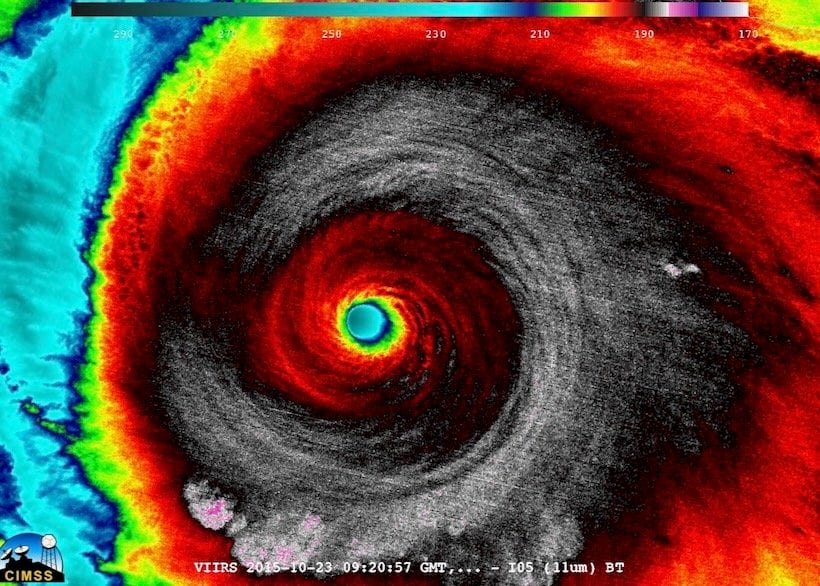Since its first meeting 36 years ago, the World Economic Forum has gathered in Davos, Switzerland, each year (save for one Covid-related cancellation) to discuss economics, technology, security, creativity, and leadership on a global scale.
The WEF Annual Meeting 2024 is still a few days away, but we already know some of the biggest issues on the docket: cybersecurity, healthcare, green technology, and industrial artificial intelligence applications. Experts at the WEF believe that advancements in these fields could make things much better—or much worse—for humanity over the next decade. And there are already plenty of indicators on how these issues may develop.
Misinformation and Disinformation
On January 10, the WEF released the Global Risks Report 2024. Each year, this report comments on the most-severe risks for the next decade. While climate disasters, armed conflicts, and collapsing economies all made the top 10 list, the biggest documented threat for the next two years was actually a cybersecurity issue: misinformation and disinformation.

The report noted that generative AI could create mountains of plausible-but-misleading content, either on purpose or through “hallucinations.” And “trusted sources” to debunk these claims may be in short supply, as two of the other major risks were “societal polarization” and “cyber insecurity.” In a fractured society that doesn’t generally punish cybercriminals, trying to establish a baseline for truth is an uphill battle. Considering that “interstate armed conflict” was also a significant risk for the next two years, it’s not hard to see how misinformation and disinformation could be deadly.
AI’s Contributions to Healthcare
In brighter news, the WEF took time to highlight the great potential of AI in improving healthcare. The organization has teamed up with the Boston Consulting Group to launch the Digital Healthcare Transformation Initiative, which aims to improve patient outcomes with better data, analytics, and AI. And they are not starting from scratch. AI is already playing a role in helping to streamline paperwork and even assist in diagnoses in fields such as in mental health, for instance.
The WEF believes that “greater public-private collaboration is urgently needed” to bring about these changes. That’s because governments, private businesses, and academic institutions all contribute to the field. As such, the WEF has highlighted both “funding and incentives” and “regulations and policies” as keystones of its initiative.

Investing in Green Technology
While cybersecurity may have been the most-pressing threat in the Global Risks Report, climate change was perhaps the most prevalent. “Extreme weather events” and “pollution” both make the top 10 list for the next two years, while “critical change to Earth systems,” “biodiversity loss and ecosystem collapse,” and “natural resource shortages” joined them on the list for the next 10 years.
While climate change is a threat, the WEF also believes that it can be a huge financial opportunity (a case made passionately by green entrepreneurs such as Idealab’s Bill Gross). According to the WEF, reducing the demand for energy, rather than simply enhancing the supply, could save trillions of dollars per year. To accomplish this, business leaders can embrace existing technology, such as electric vehicles, more efficient building design, and even AI algorithms that can optimize factory floors. (AI is already playing a role in rapidly developing greener materials and designs.)
The WEF highlighted how government incentives, such as the Inflation Reduction Act in the United States, can help facilitate some of these changes. Similarly, a lack of such incentives can cause green tech initiatives to falter.
Industrial Applications of AI
AI’s potential benefits extend into the broader industrial world. The WEF’s Global Lighthouse Network, which explores the intersection of digital technology and manufacturing, recently published a paper, “Adopting AI with Speed and Scale.” It discusses how dozens of different manufacturing companies, all around the world, have implemented AI algorithms to become more efficient, profitable, and sustainable.
One example from the United States is DHL Supply Chain in Memphis, Tennessee. The WEF highlighted its integration of “robots, analytics, and a flexible staffing solution” to optimize payrolls, cut shipment times, and adapt to changing consumer habits. DHL’s competitor FedEx has adopted similar practices to improve productivity, safety, and logistics.
The Urgency of Decarbonization
In keeping with the environmental concerns of the Global Risks Report, the WEF was also eager to highlight decarbonization. The organization measured the emissions of eight industries that use massive quantities of fossil fuels: aluminum, ammonia, aviation, cement, oil and gas, shipping, steel, and trucking. These industries, which are 90% reliant on fossil fuels, emit 40% of global greenhouse gas emissions today, according to the report.
The WEF believes that it will take a $13.5 trillion investment for these industries to achieve net-zero emissions by 2050. Renewable energy could play a major role in this process of decarbonization, as could clean hydrogen and carbon capture. This issue may be a particularly urgent one, as fossil fuel demand among these eight industries has consistently grown over the past few years, and has shown no signs of slowing down.
Worth Magazine at Davos
Worth will host three panels at the WEF’s 2024 conference in Davos. All three involve AI’s growing role in the workplace:
- Navigating the AI Revolution in Marketing and Communications | January 16, 8 AM CET/2 PM ET
- Code to Conscience: Responsible AI in Business | January 17, 7:30 AM CET/1:30 PM ET
- AI in the C-suite: How Tech’s Biggest Trend Is Disrupting Executive Work | January 17, 4 PM CET/10 PM ET
Worth will report back on the biggest lessons learned, as it did last year.
The overall WEF conference will begin at 6 PM CET (noon ET) on January 15. Once it does, you can follow it live on a variety of social media platforms.







